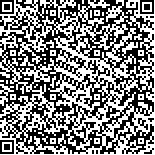| This article has been:Browse 1840Times Download 3612Times |

scan it! |
|
|
| DOI:10.13522/j.cnki.ggps.2019372 |
|
| Using GLUE to Evaluate Lacustrine Eutrophication |
|
ZHENG Zhen
|
|
Fuzhou Research Academy of Environmental Sciences, Fuzhou 350000, China
|
| Abstract: |
| 【Objective】Leaching of nitrogen and phosphorus from soil could result in eutrophication in surface water, and quantitatively assessing eutrophication and evaluating its risks is important in water quality classification and improving water and fertilization management. This paper aims to test the feasibility of using CLUE to evaluate lacustrine eutrophication.【Method】The water eutrophication model was developed based on the BP neural network using water quality data measured from a monitoring point at the Shanzai reservoir in Fujian province. Uncertainty of all parameters in the eutrophication model and their 90% confidence intervals were analyzed using the GLUE method.【Result】The BP neural network was able to predict the change in algae concentration, with small NSE and RMSE. The risk of water bloom was correlated positively to pH, DO, CODMn, TN, TP and Chl-a, while negatively to SSD. Temperature did not have noticeable impact on algae bloom. The high and low risks of pH, TN, TP, Chl-a and SSD were noticeable, while others were not.【Conclusion】The BP neural network model is able to predict algae bloom using some key parameters that are easy to measure from reservoir and lakes. The 90% confidence interval of all parameter in the model can be used as risk assessment indexes. |
| Key words: GLUE; BP neural network; eutrophication; risk assessment |
|
|